How to Fix Error ‘0x80242016 – Failed to Install’ on Windows
Lately, there’s been a huge influx of Windows users encountering the 0x80242016 error when attempting to install certain Feature Updates through Windows Update. This issue is reported to occur on both Windows 10 and Windows 11.
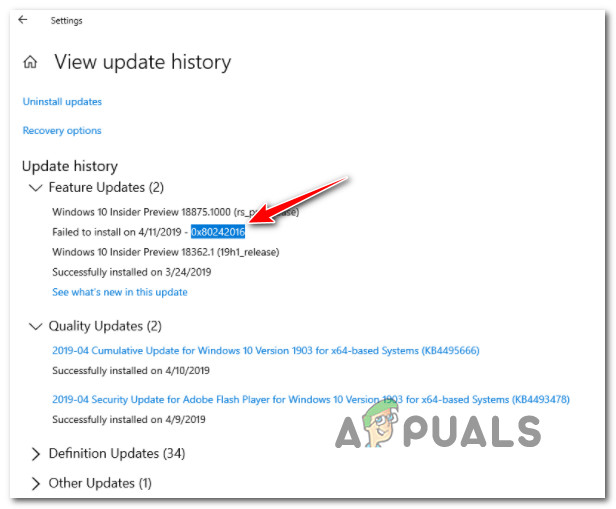
After checking this particular issue thoroughly, it turns out that there are several different underlying issues that might be causing this behavior on Windows 10 and Windows 11. Let’s go through some of the most common scenarios that might trigger the 0x80242016 error code:
- Common component inconsistency – There are a couple of common scenarios with the potential of breaking the Windows Update component. Fortunately, Microsoft is aware of most of them and has already packed a series of automated fixes in a utility called Windows Update Troubleshooter. Start by running it to check if your PC is capable of fixing the issue automatically.
- WU service dependency is Disabled – Windows update has a few service dependencies that are absolutely crucial. If you’re using a performance-optimizing tool, it’s possible that some WU dependencies have been disabling and that’s the main cause of this error code. To fix the issue in this particular scenario, you will need to force start every WU service dependency from an elevated CMD prompt.
- Corrupted Temporary WU files – Temporary files generated by WU whenever a new update is available can also be responsible for the apparition of this error. It’s fairly uncommon to see this error code because of corrupted files present in the SoftwareDistribution and Catroot2 folders. In this case, you can fix the issue by forcing your operating system to disregard the folders where the corrupted temp files are being stored.
- System File corruption – Under more serious circumstances, you can expect to see this particular issue due to some kind of system file corruption that is affecting the Windows Update component. If you find yourself in this scenario, you should start by running DISM and SFC scan in quick succession and work your way to a repair install or clean install if the first options fail.
- Windows Search bug – If you’re using an insider build, there’s also a possibility where an update recently installed to Windows Search ends up forcing the installed to roll back the latest feature update. In this case, you should prevent this behavior from occurring by disabling the main Windows search service.
Now that you have familiarized yourself with every potential scenario that might cause this issue, follow the verified methods below as different troubleshooting guides capable of fixing this issue.
Run the Windows Update Troubleshooter
Before you start following any of the methods below, the ideal place to start is by checking if your operating system is not capable of fixing the issue automatically.
The automated troubleshooter for WU (Windows Update Troubleshooter) has gotten a lot better in recent years, to the point where the vast majority of issues related to an inconsistent update (interruption, AV interference, etc.) can be handled automatically without the need for user intervention.
So, before doing anything else, our advice is to start by running the Windows Update Troubleshooter and applying the recommended fix (if any).
If you’re looking for instructions on running the Windows Update Troubleshooter on your Windows PC, follow the instructions below:
Note: These steps will work on every recent Windows version, but Windows Update Troubleshooter is most competent on Windows 10 and Windows 11.
- Press Windows key + R to open up a Run dialog box. Next, type ‘control’ and hit Enter to open up the classic Control Panel interface.

Accessing the Classic Control Panel interface - Inside the Control Panel window that just appeared, use the search function (top-right corner) to search for ‘troubleshoot’.
- Next, from the list of results, click on Troubleshooting.

Accessing the Troubleshooting tab - Next, go under System and Security and click on Fix problems with Windows Update.

Accessing the Windows Update Troubleshooter - At the first Windows Update troubleshooter prompt, click on Next and wait for the initial scan to complete.
- If a problem is identified, click on Apply this fix to enforce the recommended fix.

Applying the recommended fix Note: Depending on the type of fix that gets recommended, you might need to perform a series of manual steps. Follow the on-screen instructions.
- Once the fix is successfully applied, restart your Windows PC and attempt to install the failing update once again after the next startup is complete.
If the same 0x8024201 error is still occurring, move down to the next potential fix below.
Start every WU Service dependency
Contrary to what most people believe, Windows Update has a lot of services that it’s dependent on. These services need to be configured in a way that allows being called whenever the WU component needs them.
If you’re using some kind of performance-optimizing tools, some of these service dependencies might have been adjusted to remain disabled in order to improve the performance of your system.
To ensure that Windows Update has everything it needs to complete the installation of available feature updates, you need to ensure that the following services are set to AUTO:
- BITS (Background Intelligent Transfer Service)
- CryptSvc ( Cryptographic Services)
- TrustedInstaller
By using an elevated Command Prompt to ensure that the startup type of each of these services is set to Auto, you’re essentially ensuring that every WU service dependency is accessible.
Follow the instructions below to change the behavior of these services to AUTO in order to fix the 0x80242016:
Note: The method below will work on every recent Windows version including Windows 11.
- Press Windows key + R key to open up a Run dialog box. Next, inside the run prompt that just appeared, type ‘cmd’ and press Ctrl + Shift + Enter to open up an elevated Command Prompt window.
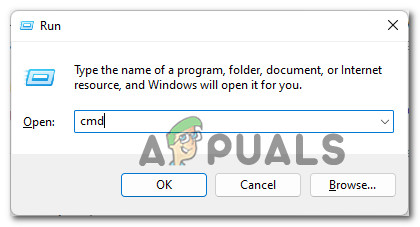
Opening an elevated CMD prompt - When you’re prompted by the User Account Control prompt, click Yes to grant admin access.
- Once you’re inside the elevated CMD prompt, type or paste the following commands and press Enter after each one to change the startup type of each required dependency:
SC config wuauserv start=auto SC config bits start=auto SC config cryptsvc start=auto SC config trustedinstaller start=auto
- Once every command has been processed successfully, restart your computer normally and try installing the failing update once the next startup is complete.
In case your attempt at installing the problematic feature update ends with the same 0x80242016 error, move down to the next potential fix below.
Reset every Windows Component
If you ensured (using the method above) that every service dependency is enabled and correctly configured, the next potential culprit that you should investigate is a potential corruption issue affecting the temp files generated by Windows Update.
These temporary files (update files, logs, etc.) are stored in two folders: SoftwareDistribution and Catroot2.
However, you can’t really delete the contents of these folders since they’re protected under Windows. So the way to get around this issue is to add the .old extension to the name of both – this will force your operating system to disregard them and generate a new folder from scratch (one that doesn’t contain corrupted files).
Doing this will force your Windows OS to re-download the failing update files and hopefully eliminate the 0x80242016.
However, before you can add the ‘.old’ extension to both of these folders, you’ll need to stop the services that make use of it:
- wuauserv
- cryptSvc
- bits
- msiserver
You can do this manually, or (even better) do it all at once from an elevated Command Prompt.
Follow the instructions below to reset every WU component and clear the temp files associated with it from an elevated CMD prompt to fix the 0x80242016:
- Press Windows key + R to open up a Run dialog box. Next, type ‘cmd’ in the newly appeared Run prompt, then press Ctrl + Shift + Enter to open up an elevated Command Prompt.
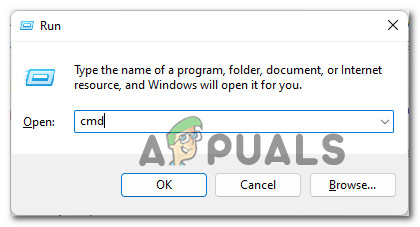
Open up a CMD prompt - When you’re prompted by the User Account Control prompt, click Yes to grant admin access.
- Once you’re inside the elevated CMD prompt, type or paste the following commands in the same order and press Enter to get there instantly:
net stop wuauserv net stop cryptSvc net stop bits net stop msiserver Ren C:\Windows\SoftwareDistribution SoftwareDistribution.old Ren C:\Windows\System32\catroot2 Catroot2.old net start wuauserv net start cryptSvc net start bits net start msiserver
- Once every command has been processed successfully, restart your PC and check if the issue is fixed once the next startup is complete by attempting to install the failing update once again.
In case you’re still dealing with the same kind of issue, move down to the next potential fix below.
Run DISM and SFC scans
If you followed the methods above already, you’ve made sure that the issue is not occurring due to a WU dependency. However, it’s also possible to see the 0x80242016 error due to some kind of system file corruption that is affecting the auto-updating function of your Windows Installation.
In situations like this one, the best course of action is to run utilities like SFC (System File Checker) and Deployment Image Servicing and Management (DISM) in quick succession in order to maximize your chance of eliminating every corrupted element.
Important: SFC and DISM share a lot of similarities under the hood, but they do things differently enough to justify running both of them in quick succession.
Start with a simple SFC scan and wait until the operation is complete.
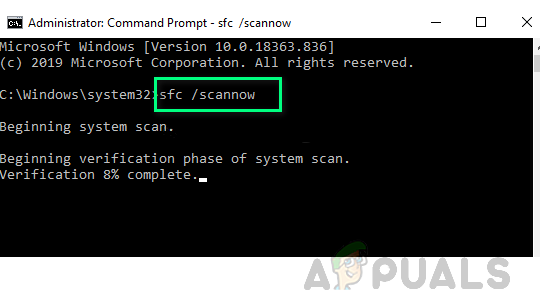
Note: Opposed to DISM, SFC is a 100% local tool – it works by using a locally cached folder to replace any corrupted system file during the initial scan.
Once the SFC operation is complete, reboot your computer and wait for the next startup to complete.
After your Windows PC boots back up, go ahead and deploy a DISM scan.
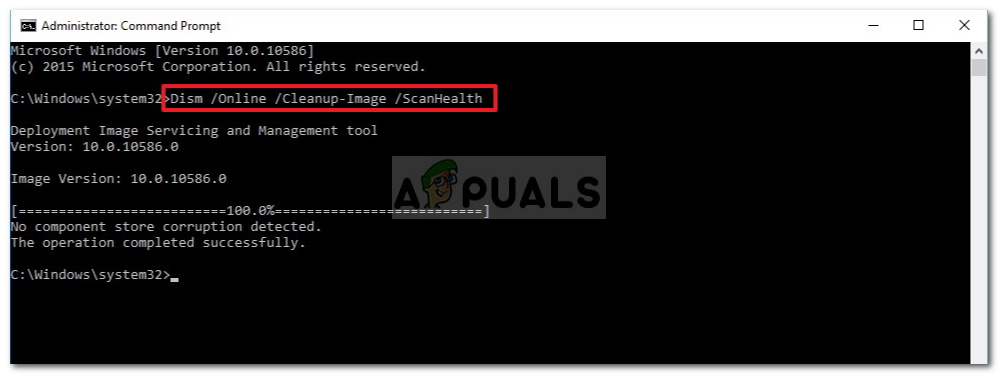
Note: Before you start this type of scan, ensure that you have stable access to the Internet. This is necessary because DISM relies on a subcomponent of Windows Update to download the healthy equivalents for the corrupted system files that need to be replaced.
After the DISM scan is complete, reboot your PC one final time and check if the 0x80242016 error is fixed by attempting to install the failing update once again.
Disable Windows Search Properties (if applicable)
If you’re using an Insider Preview build, you are prone to facing issues that will not make it to a public release. This is the case with the latest outbreak of the 0x80242016 error caused by the improvements brought about to the Windows Search feature.
This sort of issue is exclusive to Microsoft Insider’s users and it’s brought about by the main Windows Search service crashing and forcing the installer to roll back the recent upgrade.
Fortunately, a few tech-savvy Windows users have discovered a solution. All you need to do is take a trip to the Services menu and changing the Startup type behavior of Windows Search to Manual.
If you’re looking for step by step instructions on how to fix this particular scenario, follow the instructions below:
- Press Windows key + R to open up a Run dialog box. Next, type ‘services’msc’ inside the text box and press Enter to open up the Services screen.

Opening up the Services screen Note: When you’re prompted by the User Account Control (UAC) prompt, click Yes to grant admin access.
- Once you’re inside the Services utility, use the right-hand pane to scroll down through the list of available services until you find the entry named Windows Search.
- After you find the correct listing, right-click on it and choose Properties from the context menu.
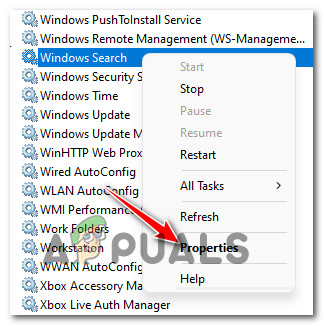
Accessing the Properties screen - Once you’re inside the Windows Search Properties screen, access the General tab from the menu at the top.
- Inside the General tab, change the Startup type drop-down menu to Manual, then click on Apply to save the changes.
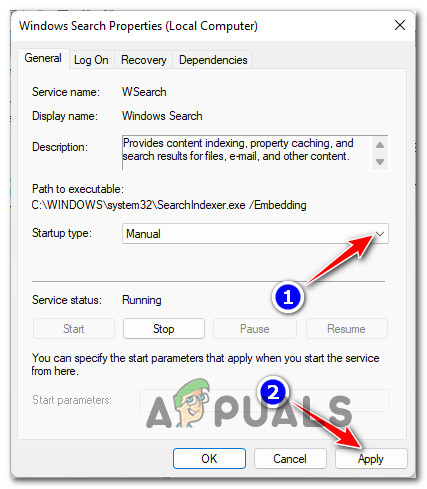
Change the behavior of the Windows Search service - Restart your PC and repeat the behavior that was previously causing the 0x80242016.
If the same kind of issue is still occurring, move down to the final potential fix below.
Perform a Repair Install / Clean install
If you’ve followed every potential fix above and you’re still dealing with the same error code, there’s a big chance you’re dealing with a serious system file corruption issue that you won’t be able to fix conventionally.
In situations like this one that you’re facing, the best course of action would be to refresh every system file component that might be preventing Windows Update from installing the pending feature updates.
When it comes to achieving this goal, you have two available options:
Clean install:
Repair install (in-place repair)
Note: If possible, our recommendation is to go for a repair install procedure since it will allow you to fix the issue without any sort of data loss – you get to keep personal files, apps, documents, and even some user preferences that are stored on the OS partition.





